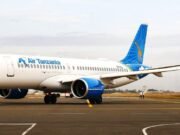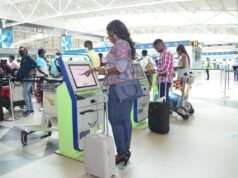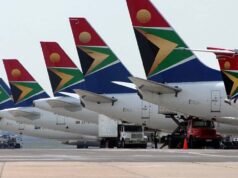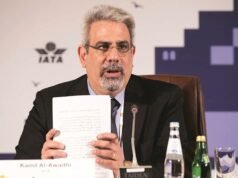Bolgatanga Airport Proposal Raises Viability Concerns | By Dominick Andoh | The Ghana Airports Company Limited (GACL) has revealed plans to construct an aerodrome in Bolgatanga, the capital of the Upper East Region.
However, the project has generated significant scepticism regarding its commercial viability, particularly given the ongoing challenges faced by existing domestic airports in Ghana.
The underutilisation of facilities, such as the Ho Airport, raises serious questions about whether a new airport in Bolgatanga could achieve the necessary passenger traffic to sustain itself financially.
Currently, the Ho Airport, which was inaugurated with the hope of fostering regional growth, has struggled to attract passengers and remains largely underutilised. This highlights that regional airports are not meeting their financial targets, leading to heavy losses that subsidies from more lucrative facilities like Kotoka International Airport in Accra must offset.
All domestic airports are reliant on financial support, which raises fundamental questions about the long-term sustainability of any new airport infrastructure without a viable commercial plan.
A significant issue contributing to the financial instability of domestic airports in Ghana is the current domestic airport tax, which stands at a mere GHC 5 per passenger. Various stakeholders have criticised this fee as grossly inadequate to cover operational costs or to facilitate necessary improvements and expansions.
For instance, in 2022, the GHC 5 charged to each domestic passenger for the use of on-ground aviation infrastructure yielded just under GHC 4.3 million cedis. In 2024, with a domestic passenger throughput of 862,727, about GHC 4.3 million was realised.
The amount, which translates into about GHC 360,000 per month, remains inadequate for maintaining the Kumasi, Sunyani, Wa, Ho, and Tamale airports and Terminal 2 of the Kotoka International Airport in Accra, which is used for domestic operations.
Typically, for an existing regional airport such as the Tamale Airport, the major expenditure lines—electricity and water supply, maintenance of lighting equipment, air conditioning, janitorial services, waste disposal, maintenance of the terminal building, and other overhead costs—are close to one million cedis per month.
Experts have suggested that the airport usage tax must be recalibrated, with proposals indicating an increase to around GHC 50 per passenger. Such an increase could allow regional airports to operate more sustainably, enhancing their capacity to serve local populations and businesses while attracting more tourists.
“[The non-viability of domestic airports] is because of the artificial cap on revenue, not because of demand. Tamale, for instance, is pushing 220k passengers annually. If they were to charge a realistic amount per passenger, like even GHC 50, that would cover their operation costs,” Sean Mendis, an aviation consultant and CEO of Sean mendis.com, told AviationGhana
Experts argue that the proposed Bolgatanga aerodrome will create demand because it is not conveniently linked by road like HO.
An airport construction expert who prefers not to be named argues that the government should rather look to construct an expressway from the Tamale Airport to the site earmarked for the Bolgatanga Aerodrome project.
“An Expressway between Bolgatanga and Tamale is far more feasible and viable. It will have a positive impact on the economy. [Facilitate] the movement of people and goods, which is not always possible by air. I would push for an expressway. If this project is to be done, a deep study with all stakeholders involved should be a first consideration,” the airport construction expert told AviationGhana.
A unified approach is urgently needed to address the financial framework governing domestic air travel in Ghana. The current model is unsustainable and calls for a comprehensive evaluation that reassesses passenger taxes and implements measures to stimulate domestic passenger growth.
Until a significant increase in the domestic airport tax is implemented, the proposed Bolgatanga Airport project may not evolve into the anticipated economic gateway for the Upper East Region.
The combination of insufficient passenger throughput, heavy reliance on subsidies for operational costs, and the lack of a cohesive economic strategy underscores the urgent need for systemic reform. These changes are crucial to transforming regional airports into viable entities that can sustain themselves and contribute meaningfully to Ghana’s economic landscape.
The promise of a new aerodrome in Bolgatanga could serve as a pivotal turning point, but only if it is built on a foundation of rigorous financial planning and robust passenger growth strategies.
Bolgatanga Airport Proposal Raises Viability Concerns | AviationGhana




























